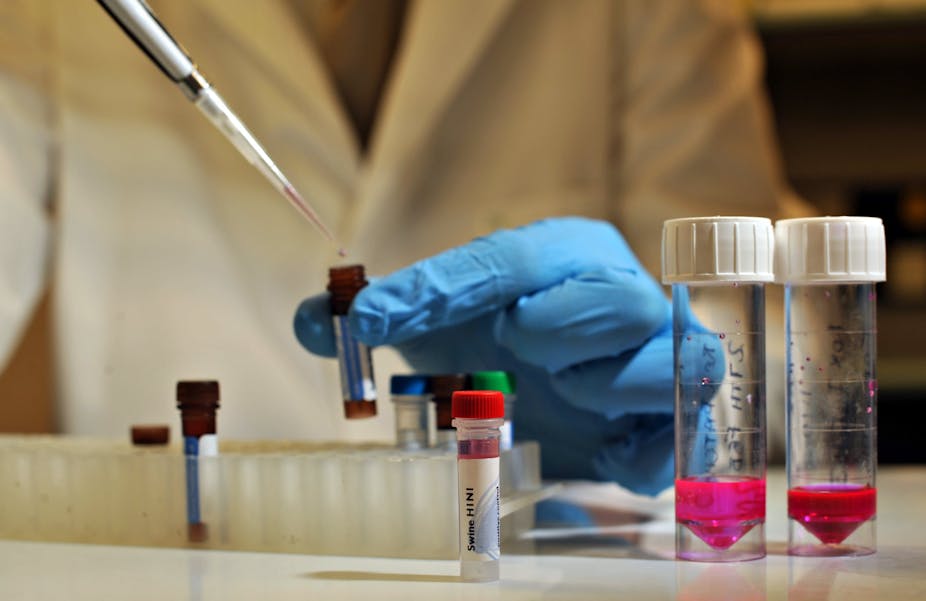Most people are not aware of fragile X syndrome but they may well be affected by it or know someone who is. Commonly under-diagnosed or misdiagnosed the condition is often mistaken for Attention Deficit Hyperactive Disorder (ADHD) or autism.
Prevalence of 1 in 2500 worldwide makes the syndrome the world’s most common cause of hereditary developmental difficulties in children.
Its effect is gender-specific with girls usually showing milder levels of intellectual difficulty than boys.
Caused by an abnormal expansion of DNA just above the tip of the X chromosome’s long arm, fragile X occurs across every culture. And unlike similar disorders, it is not related to the age of the mother at the time of conception.
Genetic path of the syndrome
Fragile X can be inherited from either a mother or father carrying an abnormal copy of the gene on their X chromosome.
Since the gene is on the X chromosome, a father cannot pass it on to his sons (fathers only pass on a Y chromosome to male offspring).
When the fragile X gene is passed on from a mother to her children, the gene may become altered to the point where it is unable to work properly. When this happens the gene cannot produce enough or any of the protein coded for it.
Although the exact function of this protein is not yet full understood, it is known to be critical to early intellectual and cognitive development. So the most prominent feature of fragile X is developmental difficulties.
The autism-fragile X link
One of the reasons why a diagnosis of fragile X is often delayed is because it shares many characteristics with autism.
Current research estimates that 25% to 35% of children who have fragile X are misdiagnosed as having autism due to the disorders’ many overlapping features.
Features common to both include language delay, echolalia, and repetitive speech alongside poor eye contact, and stereotypic movements such as hand biting and hand flapping.
Many children also display unusual reactions to environmental stimuli such as sudden noises e.g. sirens or alarms, movements, or changes such as a transition from one classroom activity to another.
The anxiety this provokes can often lead to hyper-arousal potentially leading to outbursts of aggression.
Common behavioural challenges in people with fragile X
Alongside hyperarousal, hypersensitivity is another early prominent behavioral feature in boys and girls with fragile X syndrome.
Children may become overwhelmed by the demands created by social involvement, novel or unexpected situations and changes, even the common transitions of daily life.
Another distinct and pervasive behavioral feature of the syndrome are attention and hyperactivity problems.
In the classroom, these behaviours can manifest themselves as difficulty in staying focused on a task for more than a few moments, difficulty in following very simple instructions, easy distraction by sudden noises or movements (e.g. scraping of a chair) and extreme impulsiveness.
The severity and prominence of these behaviours often contribute to a clinical diagnosis of Attention Deficit Hyperactivity Disorder (ADHD).
Another symptom is extreme shyness, which is experienced by many people with fragile X, especially girls, and can often hinder the desire to initiate friendships in childhood and adolescence.
The importance of accurate diagnosis
Misdiagnosis of children with fragile X denies them access to syndrome-specific resources and support systems. These would be most beneficial in early school years when intervention is most effective.
The physical features, social, behavioural and academic impairments present in people with fragile X differ from those with autism and ADHD so early intervention is doubly important.
Recognizing these features is critical to help clinicians properly diagnose the syndrome as early as possible in development so effective educational and clinical interventions can be implemented from a young age.
It is also important that resources are available for teachers from as early as preschool so that at every stage of academic transition, teachers and parents alike know what to expect and how to intervene with fragile X-specific educational resources.
The proposed development of “Building Links Australia” a virtual web resource for families, educators and clinicians will help create partnerships in understanding, intervening and treating children and adolescents with fragile X and other developmental disabilities across the academic trajectory.
How the syndrome is detected
A DNA test detecting fragile X syndrome with 99% accuracy was introduced in 1991. The test is routinely conducted on a blood sample.
It is important that when one family member receives the diagnosis, the rest of the family is also tested, so all carriers may have the chance to seek genetic counseling prior to bearing children.
In many families, there is no known history of fragile X and so the condition may go undetected until a sibling showing similar characteristics to his/her brother or sister is born.
Greater awareness of fragile X syndrome and how the disorder manifests across development is critical. This can only be achieved with better-targeted research and resources that ensure all Australians with fragile X are provided with opportunities to reach their full potential across their lifespan.
More information about fragile X can be obtained from the author and Fragile X Associaton of Australia.

